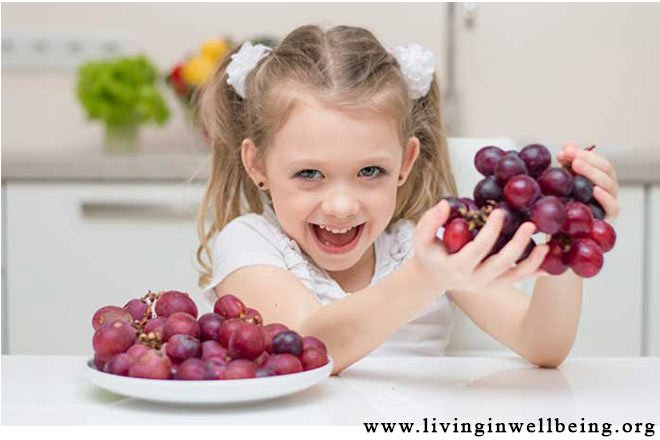
Out of many table fruits available, one of the most well-known fruits is grapes, which are extensively regarded as the "queen of fruits" since ancient times. They are basically tiny berries of the Mediterranean and Europe origin. Moreover, they are known as the storehouse of several health-promoting phytonutrients, including vitamins, polyphenolic antioxidants, and minerals. Many people include the fruit in the diet in different forms like in the form of dry fruits (raisins), fresh table fruits, juice, or as salads. You will get to know many Physical health benefits of grapes in the below sections.
Discussing the structure, every grape berry comes with semi-translucent flesh covered within a smooth and thin skin. Few of its varieties comprise of edible seeds, whereas others are just seedless. The berry’s color is due to the existence of polyphenolic pigments within them.
Even though many types of grapes all over the world the North American type (Vitislabrusca, and Vitisrotundifolia, Vitisvinifera) are found to be more nutritious. The special varieties comprised of red globe, flame seedless, cardinal, and an emperor is widely used. It is known that Zinfandel and concord are few of the flavorful blue-black type cultivars.
Health benefits of grapes
- Grapes are found to contain polyphenolic phytochemical compound named resveratrol in excess quantity. It is known that Resveratrol is one among strongest anti-oxidant which can perform protective role against severe diseases like cancers of colon and prostate, degenerative nerve disease, coronary heart disease (CHD), Alzheimer's disease as well as viral/ fungal infections. Hence, the benefit can help to leave you The Healthy lifestyle.
- Anthocyanins are recognized as a different class of polyphenolic antioxidants found plentifully in the red grapes. Such phytochemicals are known to possess an anti-inflammatory, anti-allergic, anti-microbial, and anti-cancer activity as well.
- Catechins, known as a kind of flavonoid tannin group of anti-oxidants, found in the green/white varieties have too proved to own such health-protective utilities.
- Grapes contain Resveratrol that helps in reducing the chances of stroke. It changes the molecular characteristics in the blood vessels. This is done by decreasing the activity of the systemic hormone Angiotensin that causes the constriction of the blood vessels that heightens the blood pressure.
- It is a known fact that berries are extremely low in calories. 100 gms of grapes will carry 69 calories. It does not have any cholesterol level at all.
- The micronutrient minerals such as manganese, copper and iron are found in large numbers in grapes.
- Grapes are a good source of Vitamin K, Vitamin C, Vitamin A and Carotenes. The B-Complex Vitamins like thiamine, pyridoxine and riboflavin are found in grapes that makes it very healthy and rich.
Selection and storage
Fresh grapes are obtainable in every season. While purchasing from the stores, select those grapes that feature plump in uniformity, not containing any surface wrinkles with a whole skin, excluding any cracks or cuts or leaking juice, and strongly linked to a healthy-looking green colored stem.
As grapes usually spoil early and they ferment at room temperature, the fruit, must always be kept in the fridge. Droopily enclosed washed berries inside a paper towel and then put them into a zip pouch bag at high humidity. Storing in this manner would keep them very fresh in the fridge for several days.
Preparation and serving method
Prior to its consumption, carefully clean the bunch to discard any kind of dirt and pesticide residues by rinsing in cool water for several minutes. Put them in cold water and carefully swish them for a few times. Now pat them dry through a soft cloth.
Follow below serving tips;
- Enjoy them as they are, not taking it with any additions/ seasonings.
- You will find benefits of more when you supplement seedless berries serving in any vegetable/ fruit salads along with pear, peach, tomato, apricot, lettuce, berries, apple, currants, pineapple, etc.












